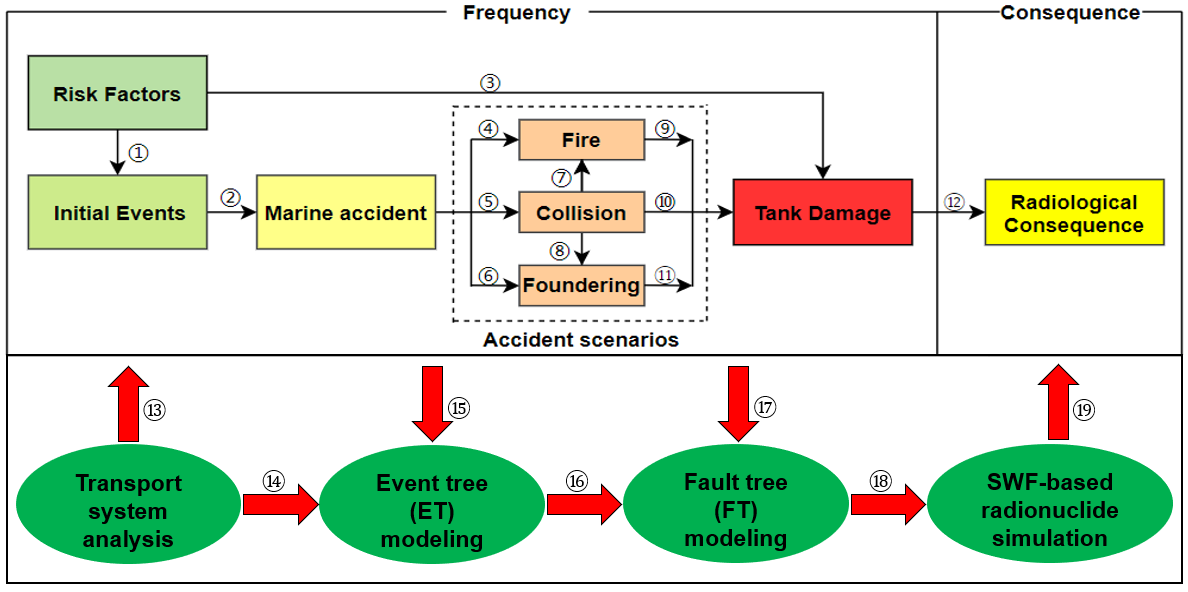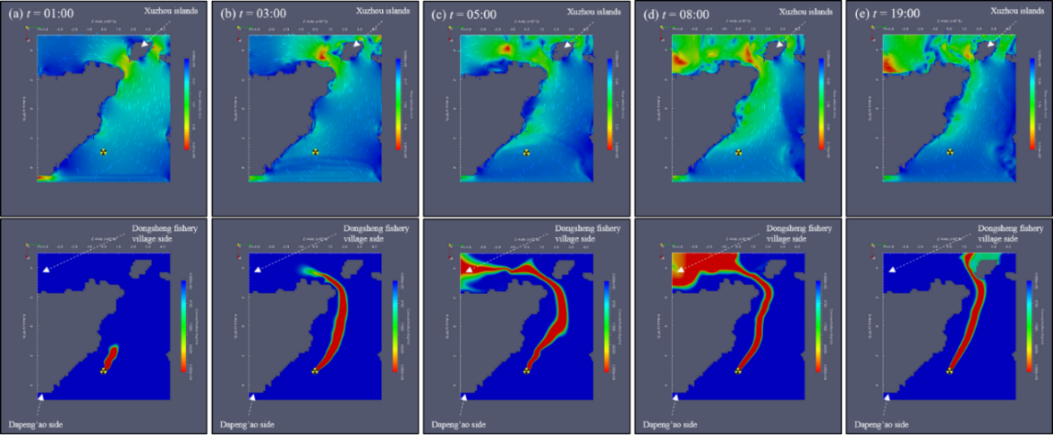
Recently, a research team led by associate Prof. GE Daochuan from Hefei Institutes of Physical Science (HFIPS) of Chinese Academy of Sciences (CAS) reported their new findings in the field of risk assessment methods and applications of spent fuel transportation.
The results were published in Reliability Engineering & System Safety.
The safety of off-site transportation of nuclear reactor spent fuel is the premise of ensuring the back-end circulation of nuclear fuel and the sustainable development of nuclear energy. Performing the risk assessment of the transportation of spent fuel can find the potential weak links of the system timely so as to take prevention and mitigation measures efficiently to reduce the transportation risks.
How to fully identify, characterize and quantify the multiple and heterogeneous dynamic risk factors of the complex transportation system, and then quantitatively evaluate the transportation risk, are the main challenges currently faced by the research of risk assessment of the spent fuel transportation.
In this research, the research group proposed a series of systematic risk assessment and route optimization methods, which could effectively reduce the radioactive risk, time cost and economic cost of the road and maritime transportation of spent fuel.
The problems of single and not fully characterized and quantified route optimization indicators of spent fuel transportation remained to be solved in current researches.
They proposed a radioactive risk-informed comprehensive path-planning method (RICPP) for spent fuel road transportation by considering radiological risk cost, time cost, and economical cost under multi-objective and weight constraints route optimization indicators, which was beneficial for selecting a safer and more economical route.
Due to the lack of comprehensive characterization and quantitative analysis of internal and external risk factors such as human error, ship failure, and navigation environment in the risk assessment of spent fuel maritime transportation, scientists suggested an integrated probabilistic risk assessment (IPRA) method integrating deterministic and probabilistic modeling perspectives, among which comprehensive risk indicators and radionuclide diffusion hydrodynamic model were established.
Based on these, the dynamic concentration of the radionuclide in coastal seawater was finely simulated and the public radioactive risks were quantified.
This research could help construction of the road-sea-railway multimodal transport support system for nuclear power plants spent fuel.
Also, it could provide theoretical guidance for the safety design optimization and operation risk management of small modular nuclear reactor (SMR), mobile nuclear power supply, small mobile space reactor and other radioactive material transportation systems.
The research was supported by the National Key R&D Program of China, Grant No. 2018YFB1900301 and the National Natural Science Foundation of China, Grant No. 71901203.

Fig. 1. The RICPP methodology framework for spent fuel road transportation. (Image by GE Daochuan)

Fig. 2. The IPRA methodology framework for spent fuel maritime transportation. (Image by GE Daochuan)

Fig. 3. Dynamic simulation of nearshore flow field (top) and radionuclide concentration (bottom) distribution at different times under the leakage accident scenario. (Image by GE Daochuan)